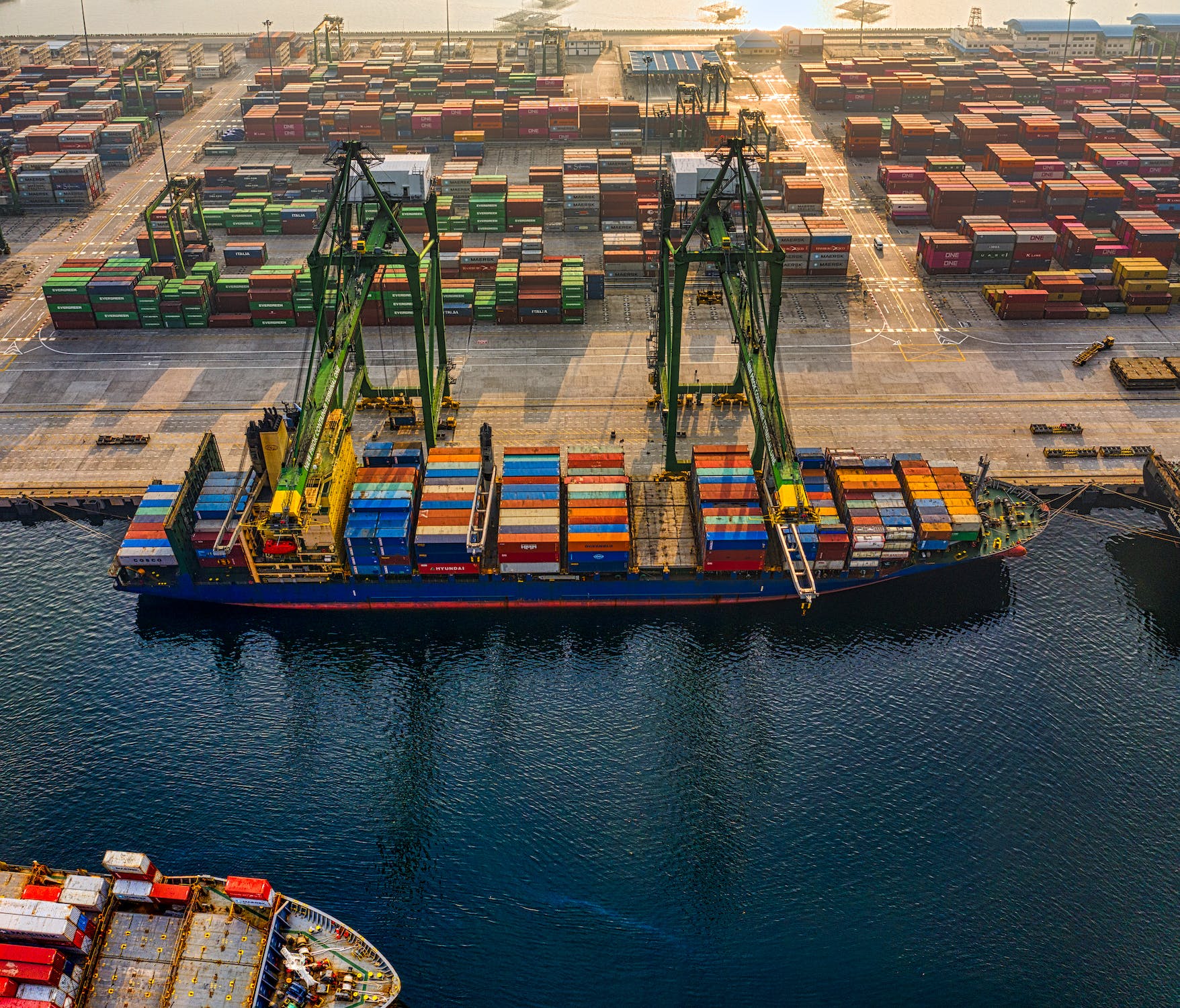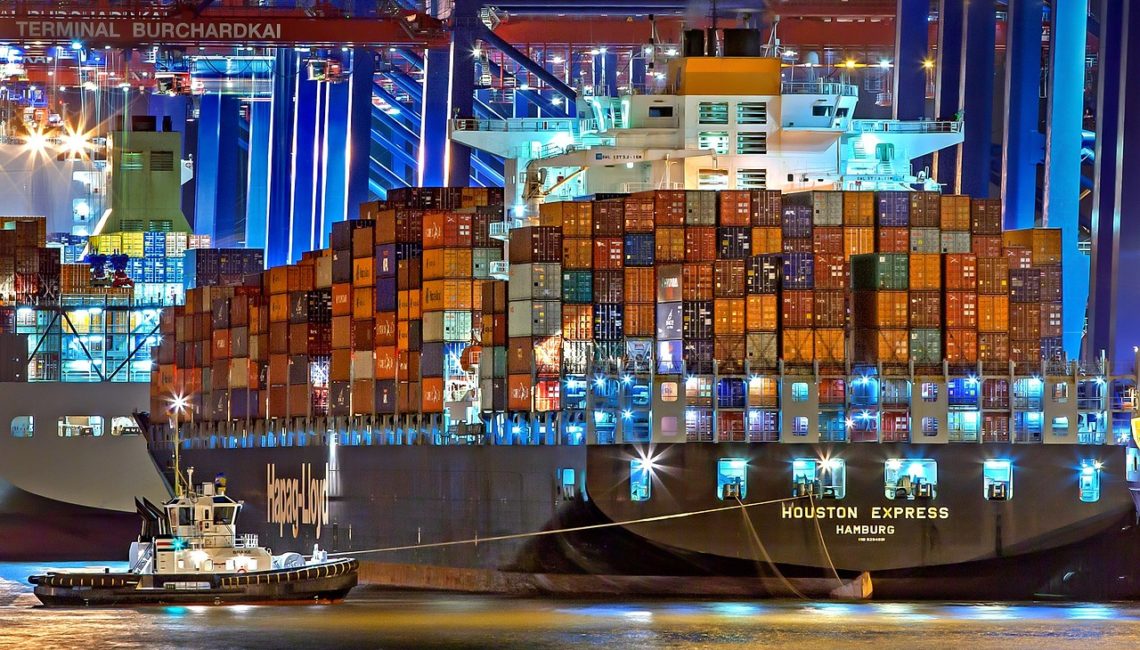Global trade has been the backbone of the modern economy, with millions of tons of goods transported across the world every day. Shipping container vessels are an essential component of global trade, responsible for carrying everything from raw materials to finished products and even helping facilitate overseas moving.
Cargo ships continue to play a crucial role in the global economy, facilitating the exchange of goods and driving economic growth. The process of loading a shipping container involves a complex series of tasks that must be carefully coordinated to ensure that the ship is loaded safely and efficiently. In this blog, we will explore the process of loading a container ship.

Steps to Loading Containers Onto Cargo Ships
Let’s look at the various steps needed before containers are loaded onto ships that carry cargo.
Prepare the Cargo into Containers
The first step in loading a container ship is to prepare the cargo for transport. This involves packing goods into containers, which are then sealed and labeled with important information such as the contents, weight, and destination. It also means being aware of and respecting stability constraints.
Transport to Port Facilities
Once the cargo has been prepared, it is transported by a trucking company to the port for loading. At the port, shipping companies need to inspect the containers to ensure they meet safety and quality standards. Dangerous goods, such as cargo containing hazardous materials must be approved and carefully stored.
Container Yards
They are then stacked in designated areas known as container yards, where they await loading onto the particular ship. The container yards are typically organized by destination, with the vast majority of containers bound for the same location placed in the same area.
Large Cranes
The loading process itself involves the use of large port cranes, which are typically mounted on rails along the quayside. These cranes are capable of lifting containers weighing up to 40 tons, and they can reach up to 22 containers across the width of the ship.
Crane Drivers
The cranes are operated by skilled workers known as crane drivers or stevedores. They use remote controls to maneuver the crane into position, and then attach a spreader bar to the top of the container. The spreader bar is designed to grip the corners of the container and lift it off the ground.
From the Air With a Crane to the Ship
Once the container has been lifted into the air, the crane operator moves it into position over the ship’s cargo hold. The container is then carefully lowered onto a stack of other containers, using special twist locks to secure it in place. These twist locks are designed to prevent the containers from shifting during transport, which is essential for maintaining the stability of the ship.
Repeat the Process
The loading process is repeated until all the containers have been loaded onto the ship. Once this is complete, the containers are double-checked to ensure they are labeled correctly and securely fastened in such a way that adverse weather conditions can’t damage cargo. Then all the containers are ready to set sail and will remain in place until the ship arrives at its destination.
Technology
In recent years, technology has played an increasingly important role in the loading and unloading process. Many ports now use automated container handling systems, which use sensors and computer algorithms to optimize the loading process and optimize a ship’s load capacity. These systems can calculate the optimal position for each container, taking into account factors such as weight distribution and cargo type. This helps to ensure that the ship is loaded in the most efficient and safe manner possible.

How Long Does It Take To Fully Load A Container Ship
Loading a container ship is a complex and challenging process that requires careful planning and coordination. It involves the use of port container trucks, large cranes like the gantry crane, skilled workers, and advanced technology to ensure that cargo is loaded safely and efficiently. With the continued growth of international trade, the importance of container ships and the loading process is likely to increase in the years ahead.
The time it takes to fully load a container ship depends on several factors, such as the size of the ship, the number of containers being loaded, and the efficiency of the loading process.
For smaller container ships, it may take several hours to load all the containers, while larger container ships may take several days or even a few weeks to load all the cargo.
The loading plan can be affected by external factors such as weather conditions and equipment availability. If the port is experiencing adverse weather conditions, such as strong winds or heavy rain, it may slow down the loading process and cause delays. Additionally, if there is a shortage of cranes or stevedores available to operate the cranes, it may also slow down the loading process.

Shipping Containers & Focus Moving
The time it takes to fully load a container ship can vary greatly depending on various factors, but it typically takes several hours to several days or weeks depending on the size of the ship and the cargo.
If you are looking for a moving company in Toronto Focus Moving is a leading logistics company that specializes in providing efficient and reliable container shipping services. With a vast network of partners and agents across the globe, Focus Moving is well-positioned to meet the growing demand for international trade and transportation. When moving internationally, Ottawa is a great hub to consider. Contact Focus Moving for more information.




